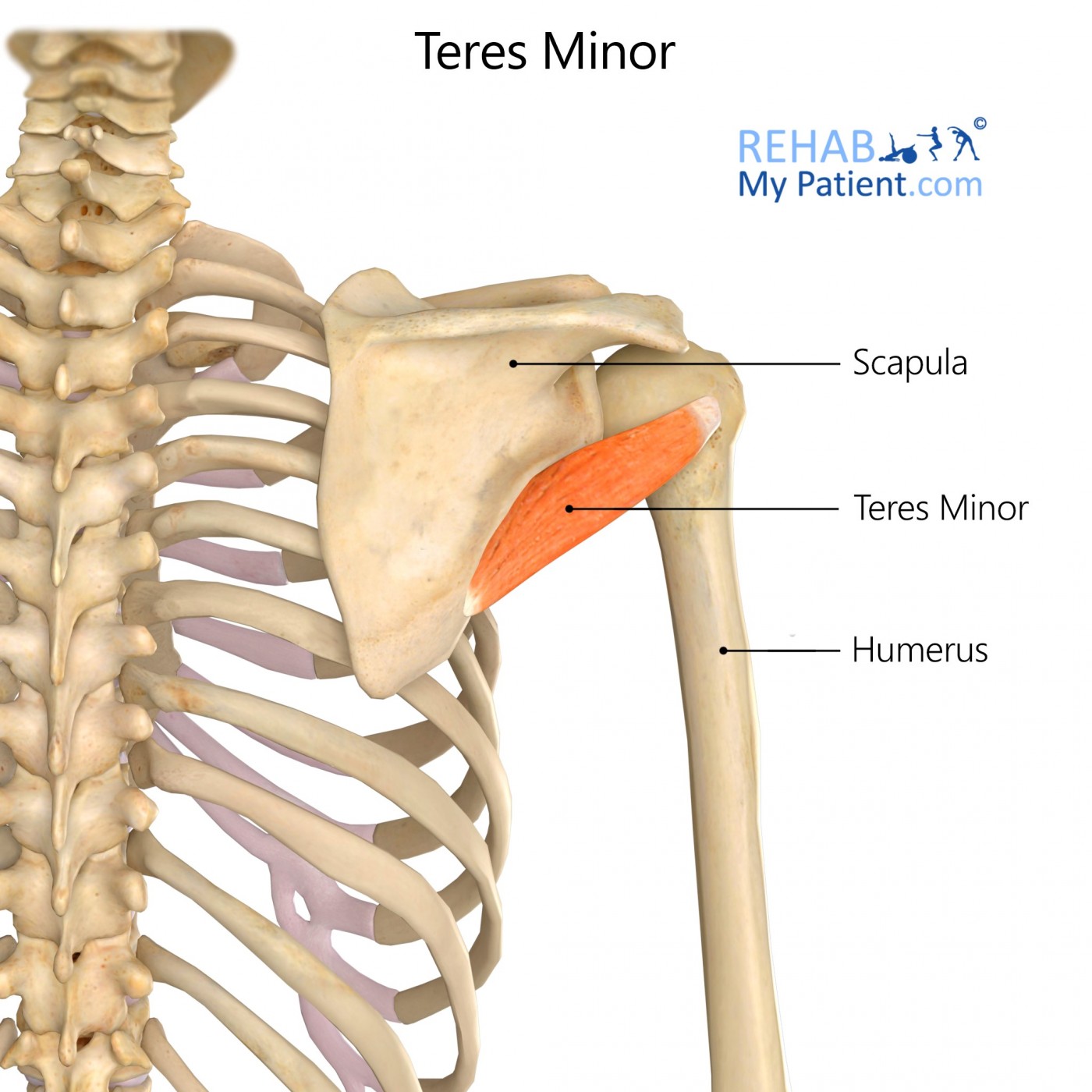Teres Minor
Opublikowano dnia 30th Jul 2020 / Opublikowano w: Ramię

General information
The teres minor is an elongated, narrow muscle within the rotator cuff of the shoulder.
Literal meaning
Lesser round or rounded off.
Interesting information
The rotator cuff is a muscle group that works together to give the shoulder joint stability and help to control it during rotation. Sports that require a great deal of shoulder rotation cause this muscle to become injured quite frequently. Bowling in cricket, kayaking, swimming, and pitching in baseball all put too much strain on the rotator cuff muscles and the stress can cause them to tear or become otherwise injured. Beyond tearing the muscle, you can also end up with tendinopathy due to inflammation of the muscles.
Chronic tears are those that develop over an extended period of time. Most of the time, they occur at the tendon due to the tendon rubbing against the bone and can be related to impingement syndrome. This particular problem tends to be seen in those who are over 40 years of age on the more dominant shoulder. Pain can worsen at night, especially when trying to sleep. It will worsen over time and the shoulder will weaken to the point where the athlete won’t be able to lift their arm to the side. Overhead movements become increasing difficult to perform.
Origin
Upper third out of the lateral margin in the scapula.
Insertion
Lowest aspect out of the greater tubercle for the humerus and the humeral shaft beneath the tubercle.
Function
Lateral rotation for the humerus.
Stabilisation of the shoulder joint.
Stabilisation of the head of the humerus into the glenoid cavity.
Aids in adduction of the arm, especially when heavily loaded.
Nerve supply
Axillary nerve C5-C6.
Blood supply
Circumflex scapular artery.
Posterior circumflex humeral artery.

Relevant research
Rupture in the teres minor can cause a loss of external rotation, while attributes to severe functional disabilities in being able to participate in regular daily activities. A latissimus dorsi tendon transfer, as proposed by Gerber back in 1998, seemed to be the best solution in these situations where the superior and posterior cuff tears were irreparable. From 2001 to 2004, 30 patients underwent the operation from Gerber’s technique. It was found that 85% of the patients were satisfied with the results of the operation.
Nové-Josserand L, Costa P, Liotard JP, Safar JF, Walch G, Zilber S. Results of latissimus dorsi tendon transfer for irreparable cuff tears. Orthop Traumatol Surg Res. 2009;95(2):108-113. doi:10.1016/j.otsr.2008.10.002
Teres minor exercises
Seated row with resistance band
Position a resistance band around something sturdy. Get into position sitting in a chair only a few feet away from the anchor with the band shoulder height. Grab either end of the band with both hands while palms face downward. It may be necessary to vary the resistance by adjusting the position of the hands. Grasp the band closer to the center for added resistance and closer to the ends for minimal resistance. Sit up straight in the chair with the feet flat on the floor. Squeeze the shoulder blades together and pull the band in to the chest while bending the elbows. Return slowly to the starting position while releasing the shoulder blades. Repeat the movement for eight to 12 repetitions.

Zapisać się
Zarejestruj się już teraz, aby skorzystać z bezpłatnego okresu próbnego!
Zacznij korzystać z Rehab My Patient już dziś i zrewolucjonizuj proces przepisywania ćwiczeń, aby zapewnić sobie skuteczną rehabilitację.
Rozpocznij 14-dniowy bezpłatny okres próbny